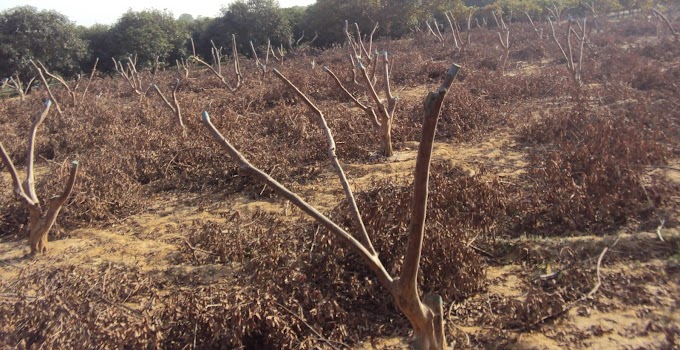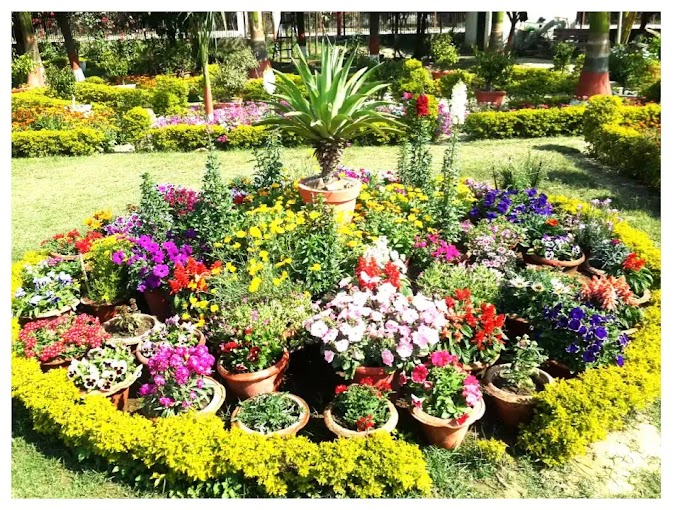The fruits are rich source of
carbohydrates, vitamins, minerals and antioxidants which play significance role
in human beings’ life. The fruits were well known as a protective food and
presently fruits have drawn researchers’ attentions because of its antioxidant’s
capacity. The fruits like aonla, bael, jamun, guava, mahua, ber, karonda,
phalsa, barhal etc. are known for its cultivation on waste and neglected lands
on which are usually not suitable for cultivation of normal fruits and
agronomical crops. Most of these species have wide adoptability as well
as high degree of tolerance against adverse soil as well as climatic conditions
hence can thrive even under most adverse agro-climatic situations. The waste
lands fruits have high nutritional, therapeutical and medicinal values but most
of species of these fruits are not popular as desert fruits because of
difficulties in use and astringent taste. Not much is known about the
processing and market acceptability of the products of these waste lands and
underutilized fruits species whereas processing into good quality processed
products increase the consumption of these fruits thereby encourage the growers
to expand the area under organized orcharding of such fruits.
Aonla (Emblica officinalis)
Aonla
also known as Indian Gooseberry can be grown successfully in neglected marginal
and sodic waste lands in which common fruit crops cannot thrive well. Aonla is
good means to expand fruit cultivation in waste land. Fruit has got high value
among indigenous medicines and used in both unani and ayurvedic systems of
medicines due its medicinal and therapeutic values since long back in India.
The aonla is rich source of vitamin ‘c’ in fresh as well as in dry or processed
form because it contains a chemical substance known as polyphenols which
retards the oxidation of ascorbic acid. The polyphenols and vitamin ‘c’ make
aonla richer in antioxidants very important for human health. Aonla fruits can
be processed into chavanprash, trifla, pickle, preserve, candy, jam, syrup, aonla
supari, aonla laddoo and dried shreds. Aonla pulp can also be blended with
medicinal plants like aloe vera to prepare processed products. Kanchan,
Chakaiya, NA6 and NA9 varieties have comparatively low content of fibre and
fairly good amount of ascorbic acid hence, they are most suitable for
processing of various products as mentioned above. Aonla fruit is very rich in
pectin and acid hence, it can be also utilized for jelly making. The aonla
processed products can be popularized in National as well international markets
under “UNDER HEALTH FOOD” brand because of its medicinal and nutritional
properties.
Bael (Aegle marmelos)
The
bael is very hardy plant in respect of soil and climatic condition it grows in
variety of soil including swampy, arid, stony and alkaline soils of 5 to 10 pH
range. Ripe bael fruit contains very good amount of riboflavin and is a tonic,
restorative, laxative and good for heart and brain. Mature green fruits are
used to make preserve and candy but proper attention has not been given for
utilization of ripe fruits. Ripe fruit can be utilized for processing
particularly for beverages such as RTS, squash, syrup etc. due to its excellent
flavour and medicinal values. Pulp colour plays an important role in beverage
industry. The beverages made from the varieties having orange colour of pulp
gave better organoleptic quality than others. The Narendra Bael- 5, Narendra
Bael- 7 and Narendra Bael- 9 are cultivars for commercial cultivation in sodic
waste lands,
Jamun (Syzygiuum cuminii)
An
established jamun tree can with stand with water logging for a month hence it
is suitable fruits for water logged waste lands. Jamun fruits that are also
known as black plum or Indian Black Berry having medicinal properties and are
rich source of antioxidants. The fruits and seeds are recommended for use to
the diabetics. Its fruits can be processed into excellent quality of alcoholic
and non-alcoholic beverages. Round and oblong are the two types of jamun
germplasms commonly found grown in eastern Uttar Pradesh. In general, the
oblong types had more pulp/seed ratio which is one of the most important attributes
for processing industry. It is worthwhile to note that jamun has high
percentage of pectin which makes its fruits suitable for jelly making. A good
quality of vinegar rich in medicinal properties and considered to be useful in
diabetics is also prepared from the jamun fruits.
Mahua (Madhuca indica)
Mahua
is suitable plant to grow on neglected waste lands it needs no much care after
establishment. Both flowers and fruits of mahua are eaten by people in various
ways. Mahua flowers are regarded as cooling, tonic and demulcent. They are used
in cough and colds. Mahua flowers are rich in sugar, vitamins and minerals.
Flowers are used for making liquors (Brandy) through distillation after
fermentation because it contains considerable number of fermentable sugars.
They are eaten with milk after sun-drying or baking into cakes. They are also
used as feed for livestock. The Seeds contain high percentage of edible oil,
protein and minerals. Mahua oil can be an excellent vegetable oil for
processing into cooking vanaspati. The mahua cakes can be used as organic
fertilizer.
Karonda (Carissa carandas)
The
karonda is suitable for fencing fruit orchards in waste lands. It can be
cultivated in saline, rocky and arid soils. Fruits are very rich in iron and
anthocyanins like antioxidants and are very useful in cure of anaemia. The
mature karonda fruits can be processed into candy, jelly and pickle whereas
ripe fruits are found to be suitable for processing into beverage like syrup
and squash. The karonda candy is used in place of cherry in baking industries.
There is no named variety of Karonda. Four types of fruit (based on colour)
have been observed. Maroon colour is rich in anthocyanin pigment in addition to
ascorbic acid content hence; maroon colour genotype can be an ideal type for
processing into jelly, candy and beverages.
Guava (Psidium guajava)
The
fruit plant that can be grown in water logged waste lands due to its capacity to
with stand with water logging for months. Fruit is a rich and cheap source of
vitamin ‘c’. It contains 4 to10 times more vitamin ’c’ than to some citrus
fruits. It has fair amount of Calcium and pectin. Sardar (L-49) variety is
highly productive and most suitable for processing of various products such as
beverages like RTS and squash. A good quality jelly of guava flavour can also
be prepared from the fruits. In addition, fruits can be used to prepare
trophies and fermented products viz. cider and wine.
Phalsa (Grewia subinaequalis)
The
Phalsa flourish well on moderately alkaline and neglected waste lands. Fruits
are good source of antioxidants and fare source of vitamins and having
medicinal properties. It cures inflammation, heart and blood disorders, fevers
and constipation being a digestive tonic. There is no distinct variety
available in phalsa. Two distinct types i.e., Dwarf and tall were identified by
the Horticulturists. The productivity of Dwarf type is more in comparison to
Tall one. The ripe fruits are suitable for processing into beverages.
Tamarind (Tamarindus indica)
The
Tamarind can be grown successfully in gravelly red loam, alkaline & sodic
soils and degraded waste lands. The Tamarind fruits are rich source of minerals
particularly phosphorus and calcium and good source of riboflavin and pectin.
The fruits are also rich in tartaric acid. The mature Tamarind fruits are
processed into jelly, chutney, glazed and crystallized candy whereas ripe
tamarind fruits were found suitable for nectar, juice, jam and sauce
preparation.
Wood Apple (Limonia acidisma)
The
wood apple is a fruit plant that can be grown in most neglected, degraded,
marginal and even in saline waste lands very successfully without much care.
The wood apple fruits are fare in proteins and riboflavin content. The mature
fruits are found to be rich in pectin content and ripe wood apple fruits having
plenty of its aromas. The mature and ripe fruits are suitable for jelly making
and ripe fruits are used for processing into beverages. There is no recognize
cultivar of Wood Apple but the genotype bearing fruits of thin shell, lesser
number of seeds and rich flavour are considered to be best for processing.










Merkur 500cc Open Handled Double Edge Safety Razor - Deccasino
ReplyDeleteMerkur 500c Open Handled Double Edge 메리트카지노 Safety Razor. The Merkur 500c is a great 1xbet double edge safety razor. Merkur is one of those classic 메리트 카지노 쿠폰 razors that have